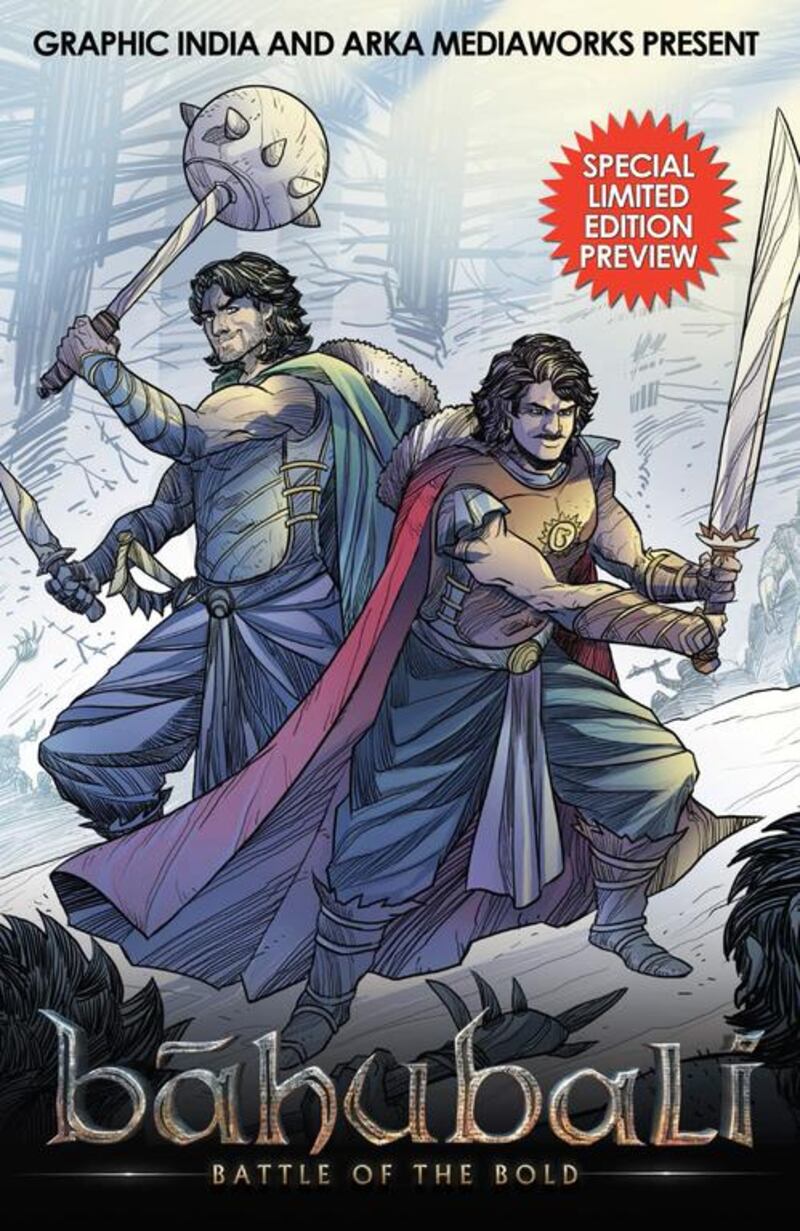Hollywood has been using film tie-ins – such as comics books, animated TV shows, video games and novelisations – for years to help movies reach wider audiences or expand their stories.
Bollywood, however, has been slow to get in on the act. One growing Indian film franchise is now hoping to show others how it is done.
The producers of the box-office record-breaking 2015 Telugu-Tamil blockbuster film Baahubali: The Beginning, which was also dubbed in Hindi, are not only getting ready to release a sequel in April, but they have also created a graphic novel, an animated web series and a video game to accompany it. A Game of Thrones-style live-action TV series and a prequel novel are also reportedly in the works.
The animated web series, Baahubali: The Lost Legends, will be released on Amazon Prime in the run-up to the film's release, while the digital version of the graphic novel, Baahubali: Battle of the Bold, was released at the Delhi Comic Con last month. Release dates for the unnamed TV series and the novel, Baahubali: The Untold Story, a prequel to the first film, are yet to be announced.
By using multiplatform storytelling in this way, the film's director, S S Rajamouli, wants to create a interconnected multimedia world for his film, the same way Hollywood does with franchises such as Star Wars, Indiana Jones and, more recently, Marvel's superheroes.
"The animated series, graphic novel and the game are different pieces of a jigsaw puzzle that fit together to expand the larger universe of characters and stories from Baahubali," says Sharad Devarajan, the chief executive and co-founder of Graphic India, the digital media company given the task of creating them.
He believes that with the introduction of such tie-in products, Baahubali has the potential to be the Indian equivalent of Star Wars.
It is a lofty ambition but not without foundation – the first film, an epic historical adventure, won legions of fans around the world and made more than 600 crore rupees (Dh3.2billion) globally (making it the second-highest grossing Indian film of all time).
Devarajan says Rajamouli’s vision and detailed work on creating backstories and histories of the characters, and the wide scope for expanding the world of the movie, helped in the crafting of the spin-offs.
Not every film is suited to be expanded as a graphic novel, he adds, which is why some previous efforts have failed.
In this case, however, Battle of the Bold allowed the storytellers to show how the main characters in the film – princes Baahubali (played by Prabhas) and Bhallal Dev (Rana Daggubati) – grew up and dealt with challenges as young adults, says Devarajan.
The first-of-its-kind 26-episode animated series, meanwhile, focuses on their childhood in the kingdom of Mahishmati. This was briefly touched upon in the film, but the series reveals more about their relationship with other important characters and how their personalities were shaped.
Baahubali is not the first Indian movie around which an attempt has been made to build a multimedia franchise. A graphic novel based on Aamir Khan's Lagaan was published in 2002, and since then a few films have followed suit, including Hum Tum (2004), Don (2011), Ra.One (2011), Agent Vinod (2012), Krrish 3 and The Flying Jatt (2016). For the most part, they disappeared without making an impact.
More recently, a five-issue comic-book series based on actor Ajay Devgn's movie Shivaay was launched in November, which is selling well, according to its publisher, TBS Planet.
Baahubali is the first film to create an animated series, but motion-comic shorts and games were adapted from the films Krrish 3 and Bajirao Mastani. However, they failed to generate much interest.
Comic Con India founder Jatin Varma says that so far such spin-offs have been little more than glorified adverts, and until filmmakers spend money and time crafting quality products, they will never succeed as creative projects in their own right.
“The quality and reach of a product like a comic book depends on the production company’s investment,” he says. “If the book is not good and the movie doesn’t sell, don’t expect a long life.”
Sreejita Biswas, a comic book writer, illustrator and founder of Strip Tease –The Mag, an e-zine about comics, says most filmmakers are not willing to think about innovative ways comics could be used to support their films.
“Art isn’t consistent: there are times when panels are reused without even being edited slightly and dialogue doesn’t make sense,” she says.
Varma notes that the makers of Star Wars not only invested money, but also decades in building and sustaining a community of fans.
One thing the makers of Baahubali have in their favour is that, as George Lucas did with Star Wars, they have created a rich, detailed history of the characters and their world, dating back generations before the time of the films. This provides plenty of untold stories for the spin-offs. Such preparation is rare in Indian films. "They seem to be going the right way," says Varma. Biswas hopes more filmmakers will embrace the opportunities to expand their stories into other media, particularly graphic novels. "Without enough comics being put out, we'll never know how good comics can get."
artslife@thenational.ae










